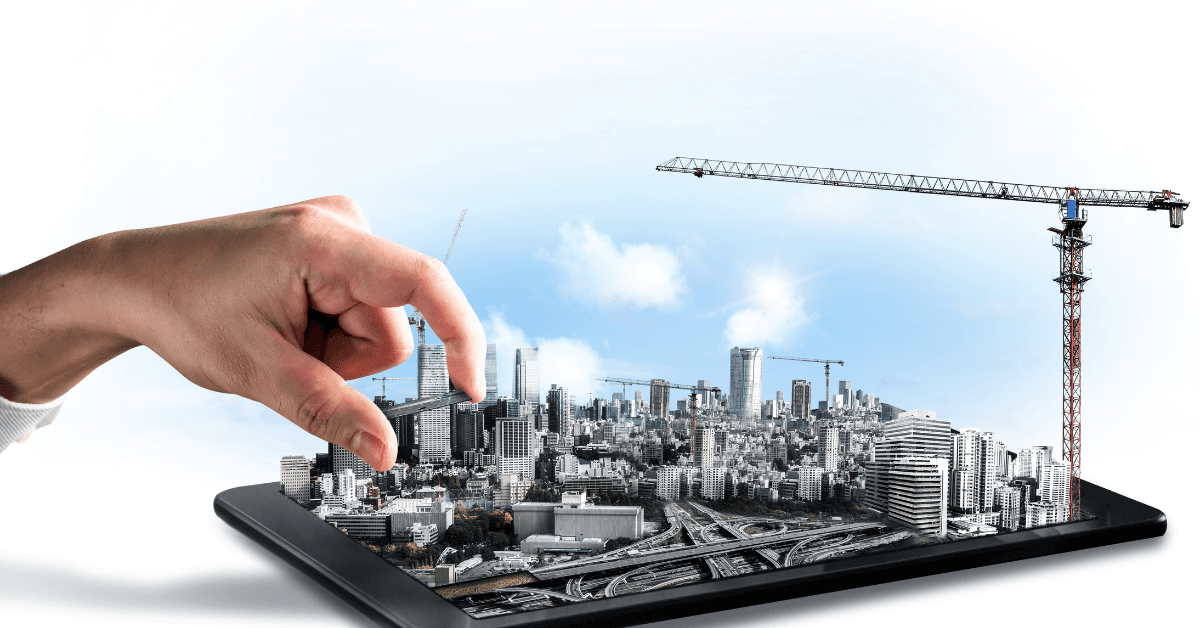Overview
In the quickly changing construction sector of today, sophisticated robotics are revolutionizing conventional methods and bringing in a new age of accuracy and efficiency. Robotic Bricklaying: The Future of Construction Automation-Robotic bricklaying is a groundbreaking invention that not only transforms the construction of walls and other buildings, but also introduces safer, more environmentally friendly, and more effective building methods. This blog explores the history of bricklaying, the introduction of robots into the construction business, the technology underlying robotic bricklaying, its advantages and disadvantages, and upcoming trends that might revolutionize the sector.
The development of bricklaying in the building sector.
For ages, the foundation of a building has been bricklaying. Expert artisans traditionally placed bricks by hand, relying on accuracy, expertise, and attention to detail. But there are drawbacks to this time-consuming procedure. Human mistakes, physical exhaustion, and irregular brick placement are all risks associated with manual bricklaying that can jeopardize structural integrity and aesthetics. In order to increase productivity, lower labor costs, and improve quality, the construction industry started looking at automation as needs increased and building projects moved more quickly. Eventually, this pursuit of advancement resulted in the creation of robotic bricklaying systems that combine contemporary robotics and computer-aided design with conventional techniques.

The development of construction robots-Robotic Bricklaying: The Future of Construction Automation
Construction robotics is not a novel concept. Many automated systems have been developed in recent decades to carry out dangerous or repetitive activities, freeing up human workers to concentrate on more difficult problems. However, the use of robotics has significantly advanced, particularly in bricklaying. Robotic bricklaying devices replicate—and frequently surpass—the accuracy and productivity of human bricklayers. These technologies operate around the clock by automating the exact placing of bricks and mortar, producing reliable results that are hard to match with manual labor.
Early 2000s saw the creation of pilot systems to assist with large-scale building projects, marking the first attempts at robotic bricklaying. These robots got more versatile as sensor technology, AI, and machine learning developed, enabling them to operate in a range of climatic conditions and architectural designs. These days, robotic bricklaying is not just a sci-fi idea; it is a workable, affordable option that is gradually gaining popularity in the sector.
The Operation of Robotic Bricklaying
Fundamentally, robotic bricklaying uses an advanced hardware and software combination to complete wall construction. The main elements consist of:
Robotic Arm: The system’s main workhorse is the robotic arm. The robotic arm is quite accurate in picking up and positioning bricks, and its design ensures flexibility. Its range of motion guarantees versatility across a variety of projects by enabling it to handle bricks of varying sizes and forms.
Vision and Sensor Systems: State-of-the-art cameras and sensors continuously survey the surroundings to measure separations, identify alignment, and confirm that every brick is positioned precisely as it should be. The system can make quick modifications thanks to the real-time data from various sensors, guaranteeing faultless operation.
Advanced control software is the fundamental component of the operation. It uses input from vision systems to guide and coordinate the actions of the robotic arm. Accurate replication of designs is made possible by integration with Building Information Modeling (BIM) technologies. The system learns from each project with ongoing updates powered by machine learning algorithms, gradually increasing accuracy.
Material Handling and Mortar Application: Many robotic systems come with automated mortar dispensers in addition to brick placement capabilities. These tools ensure structural stability and consistency in building by precisely applying the quantity of glue required for each brick.
Integration with Construction Workflows: These technologies’ capacity to collaborate with human teams is one of their main advantages. Human employees concentrate on project management, quality assurance, and the handling of intricate design components while the robots perform the repetitive, highly precise jobs. This human-machine synergy expedites building while enhancing quality and safety.
Robotic Bricklaying’s Advantages-Robotic Bricklaying: The Future of Construction Automation
Robotic bricklaying has several strong advantages.
Enhanced Efficiency: Robots work nonstop without getting tired, which significantly cuts down on the amount of time needed to do bricklaying jobs. This results in substantial labor cost reductions and quicker project completion.
Enhanced Precision: Robots can position bricks with a degree of regularity that reduces mistakes thanks to sophisticated sensors and control software. This strengthens the completed building’s structural soundness and improves its visual attractiveness.
Enhanced Safety: Conventional bricklaying may put employees at risk for accidents from repeated strain, falling objects, and unstable working conditions. A safer construction site results from the automation of these jobs, which lowers the risk to human workers.
Cost-Effectiveness: Although robotic systems may need a large initial investment, they frequently yield significant savings over time due to their reduced labor expenses, less material waste, and quicker building schedules.
Flexibility and Scalability: Robotic systems exhibit a great degree of adaptability. These systems may be scaled and set up to match the particular needs of the project, regardless of how big or small the commercial development or residential building is.
Obstacles and Things to Think About
Although robotic bricklaying has several benefits, there are drawbacks as well:
High Initial Investment: Smaller construction enterprises may not be able to afford the upfront costs associated with purchasing and using sophisticated robotic equipment. Adoption may be slowed by financial limitations and the requirement for a quick return on investment.
Technical Complexity: Integrating robotics into well-established building operations requires specialized technical knowledge. There is an unavoidable learning curve throughout the changeover, and training programs must be put in place to assist employees in comprehending, using, and maintaining these intricate devices.
Adaptability to Complex Designs: Although robots are excellent at repetitive jobs, they could find it difficult to handle extremely complex or unusual architectural designs. To increase the versatility of robotic systems for innovative and customized applications, further research and development is required.
Safety and Regulatory Requirements: New technology needs to adhere to strict safety and regulatory requirements. The widespread use of robotic bricklaying depends on ensuring compliance with national and international norms, which can be difficult to navigate.

Technical Perspectives: An Extensive Analysis of Robotic Mechanics
The mechanisms behind robotic bricklaying are both amazing and intricate. Robust control algorithms, integrated hydraulic systems, and high-precision actuators work together to ensure smooth operation. These systems perform complex calculations and process data in real time, adjusting brick placement based on environmental factors. Engineers continuously refine the mechanical design to enhance the strength and versatility of each robotic arm. Built-in redundancies allow the system to continue functioning with minimal interruption, even if a sensor fails.
Control systems undergo continuous improvement through iterative testing and simulation. Designers use advanced computer models to predict and refine the robot’s behavior in various real-world conditions. This meticulous engineering ensures the technology can handle the unpredictable challenges of construction sites. Integrating Internet of Things (IoT) devices enables real-time monitoring and predictive maintenance, further improving efficiency and extending machinery lifespan. Experts predict that as machine learning and artificial intelligence evolve, these systems will learn from every project, increasing their effectiveness over time and eventually managing entire construction operations with minimal human intervention.
Workforce Transformation and Industry Impact-Robotic Bricklaying: The Future of Construction Automation
The advent of robotic bricklaying is transforming the construction sector. While some fear automation could replace traditional bricklayers, the reality is more intricate. Instead of replacing human workers, robotic systems are redefining their roles. Skilled experts now operate, program, and maintain these advanced technologies, requiring specific training and new technical abilities.
This shift is already reshaping existing positions and creating new job opportunities. Many construction companies are investing in training programs to prepare their staff for this digital transition. Combining human ingenuity with robotic precision boosts productivity and enhances worker safety. Automating the most hazardous and repetitive tasks allows employees to focus on quality control, project management, and creative problem-solving. This collaboration is expected to raise overall construction standards and foster a culture of continuous innovation.
Robotic bricklaying has an effect that goes beyond specific building sites. Faster project completions brought forth by increased efficiency boost local economies by creating jobs and lowering building expenses. Furthermore, the consequences impact every stage of the supply chain, from improved project finance to faster material turnover, driving the entire sector to adopt more innovative and sustainable methods.
Prospects for Robotic Bricklaying in the Future
We expect many innovations to improve robotic bricklaying:
As AI technology advances, robots will get smarter. Improved machine learning algorithms will let robots anticipate and adapt to changing conditions, improving accuracy and productivity.
Collaboration in robotics is vital to the future. Combining robots and people will create hybrid work environments that maximize safety and productivity by harnessing worker talents. This relationship should lead to accomplishments neither party could achieve alone.
Sustainable building: Robotic bricklaying reduces energy and material waste, making it suitable for green building. We may improve these technologies to meet stricter environmental standards.
Robotic systems that employ construction materials must evolve with materials science. Materials research may provide new bricks and construction materials, forcing robots to adapt and push their limitations.
Global Adoption and Market Growth: Advancements and cost reductions will increase robotic bricklaying worldwide. This technology is useful for a number of projects because of its faster building timetables, greater safety, and superior quality, which both established and emerging economies are realizing.

Applications in the Real World and Case Studies
Many North American, European, and international building projects use robotic bricklaying. Pilot projects on important commercial locations have proven how these technologies may produce exceptional results in a quarter of the time needed for conventional methods. Robotic bricklaying has the potential to revolutionize the building business, since companies have claimed considerable speed and cost savings. These early successes demonstrate how automation is transforming construction and provide a blueprint for future efforts.
Accepting the Digital Revolution in Building
Robotic bricklaying is at the vanguard of the digital revolution taking place in the building sector. This progression requires rethinking building planning, construction, and maintenance rather than just implementing new technologies. Construction organizations may attain previously unheard-of levels of efficiency, quality, and safety by incorporating robotics into their operations. Accepting this change entails remaining one step ahead of the competition and establishing new benchmarks that will shape the building sector going forward.
In conclusion
A major building technology innovation is robotic bricklaying. This idea might revolutionize construction by combining smart robots, sensor systems, and software. Despite high beginning costs and technological complexity, the benefits are obvious: higher productivity, accuracy, safety, and long-term cost savings. As research and development improves, robotic bricklaying might alter the building industry.
An Appeal for Action
Are you ready to lead innovative construction? Welcome to the future of building with robotic bricklaying. Investing in this cutting-edge technology may boost output, streamline construction, and generate projects of unmatched quality and safety. Contact us today to see how our cutting-edge robotic bricklaying systems may transform your project. Accept the change and help build a safer, smarter, and more productive construction sector!



